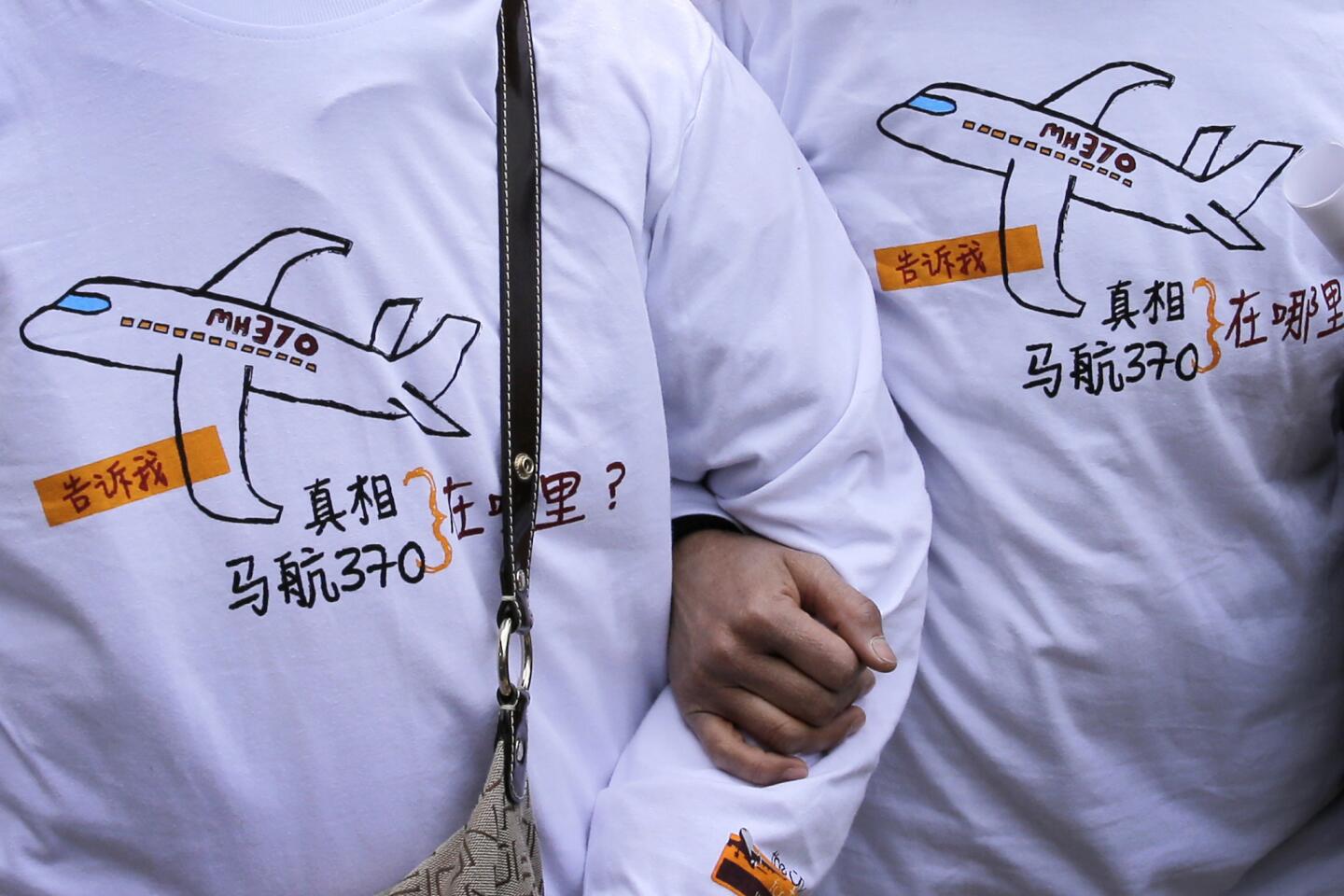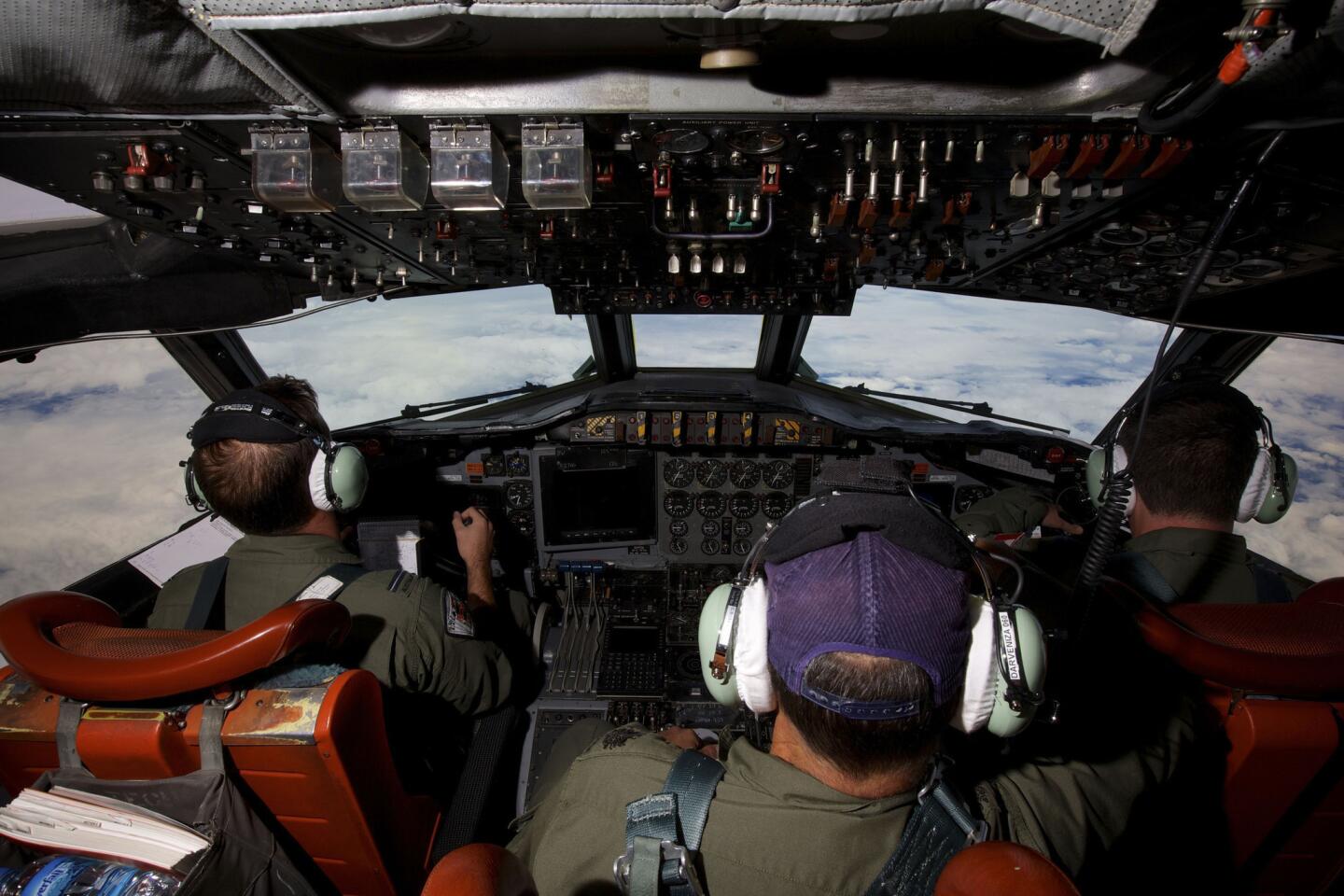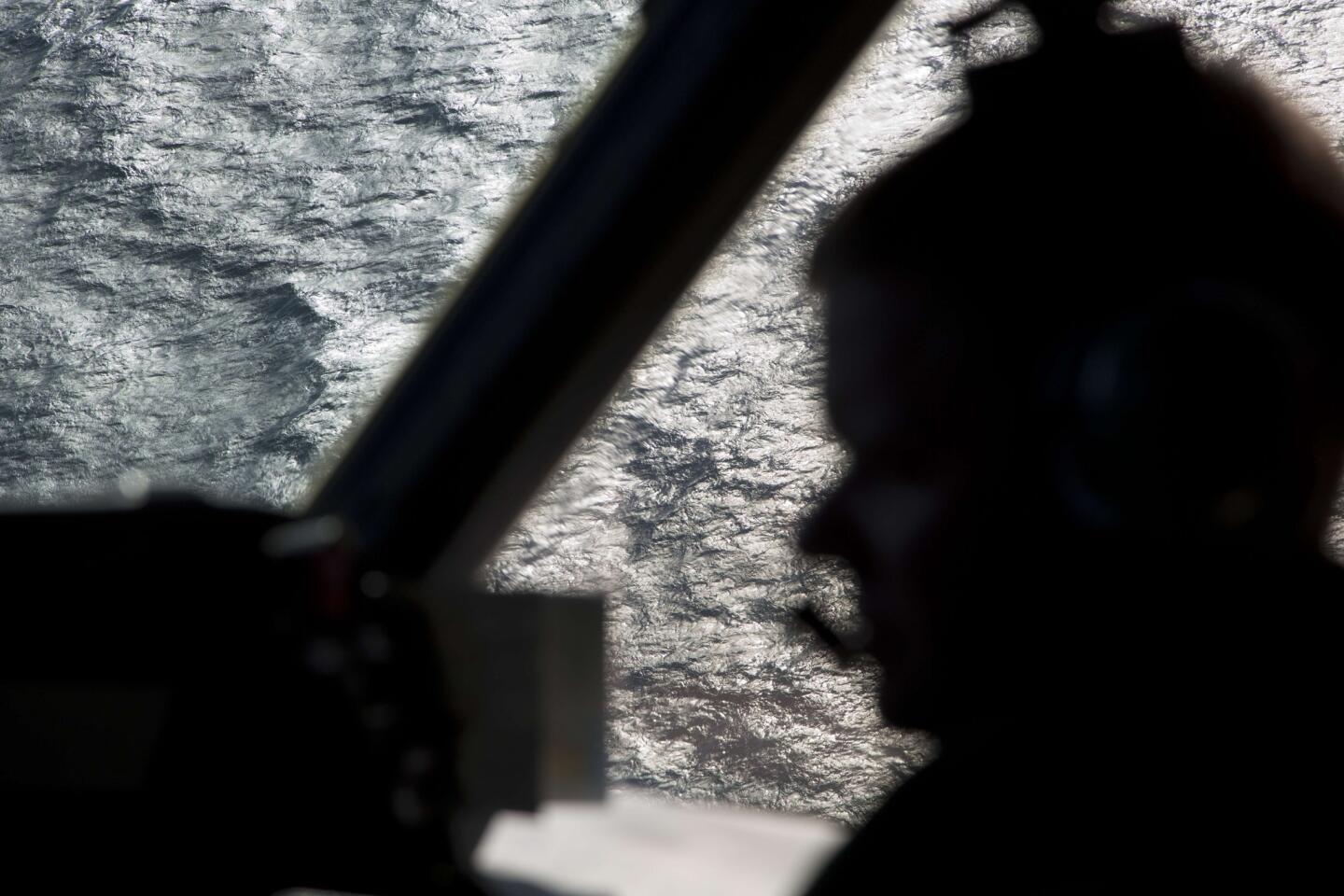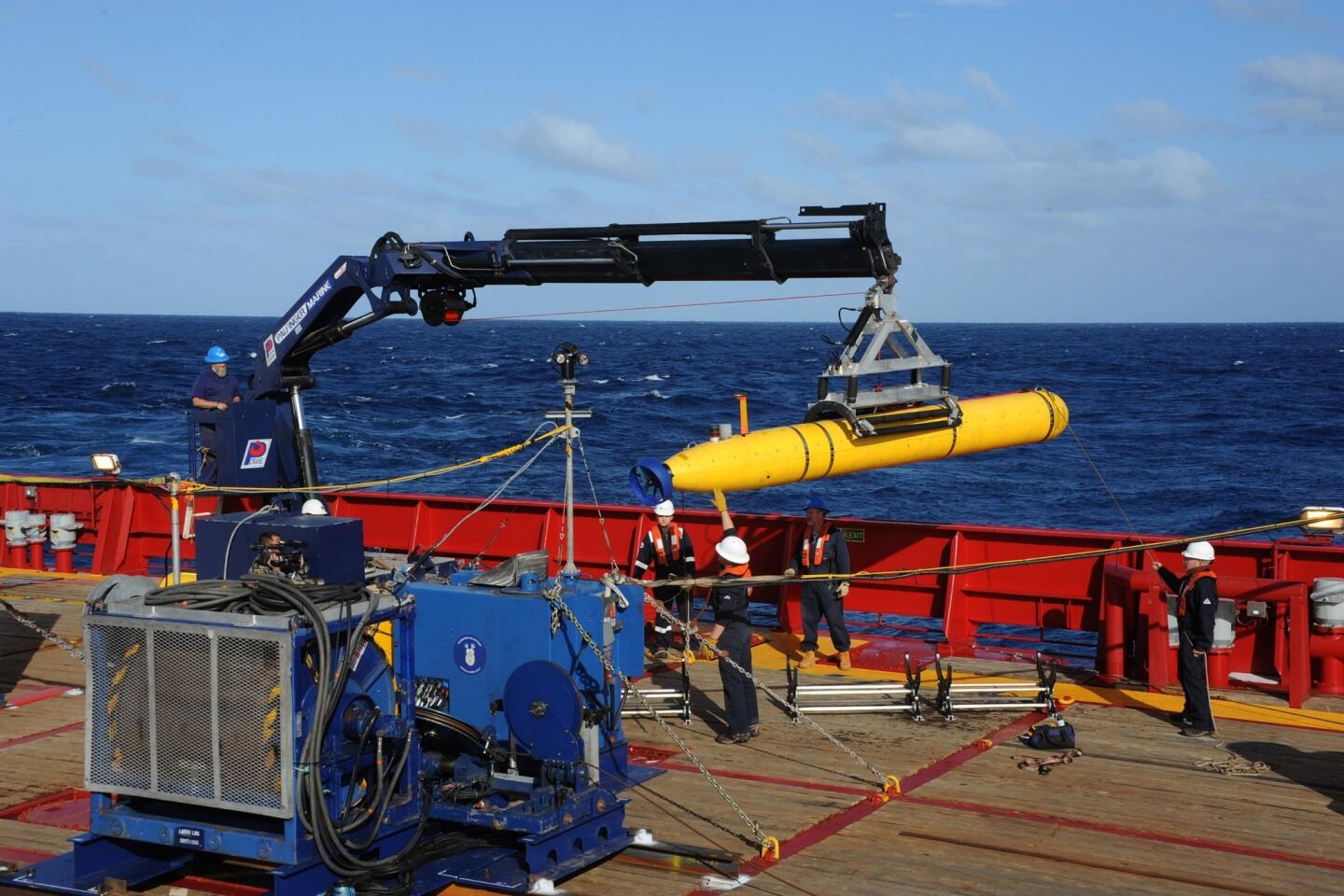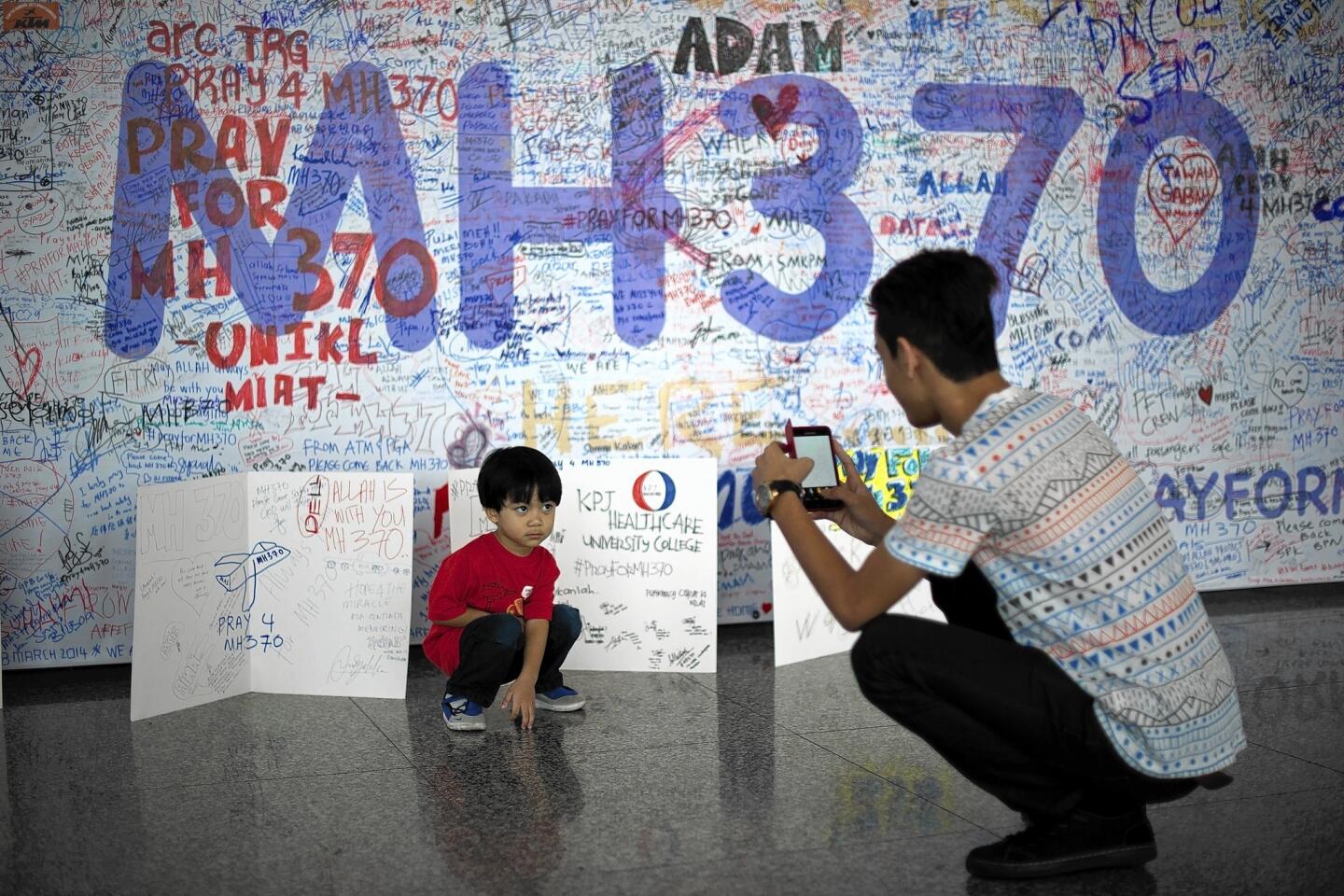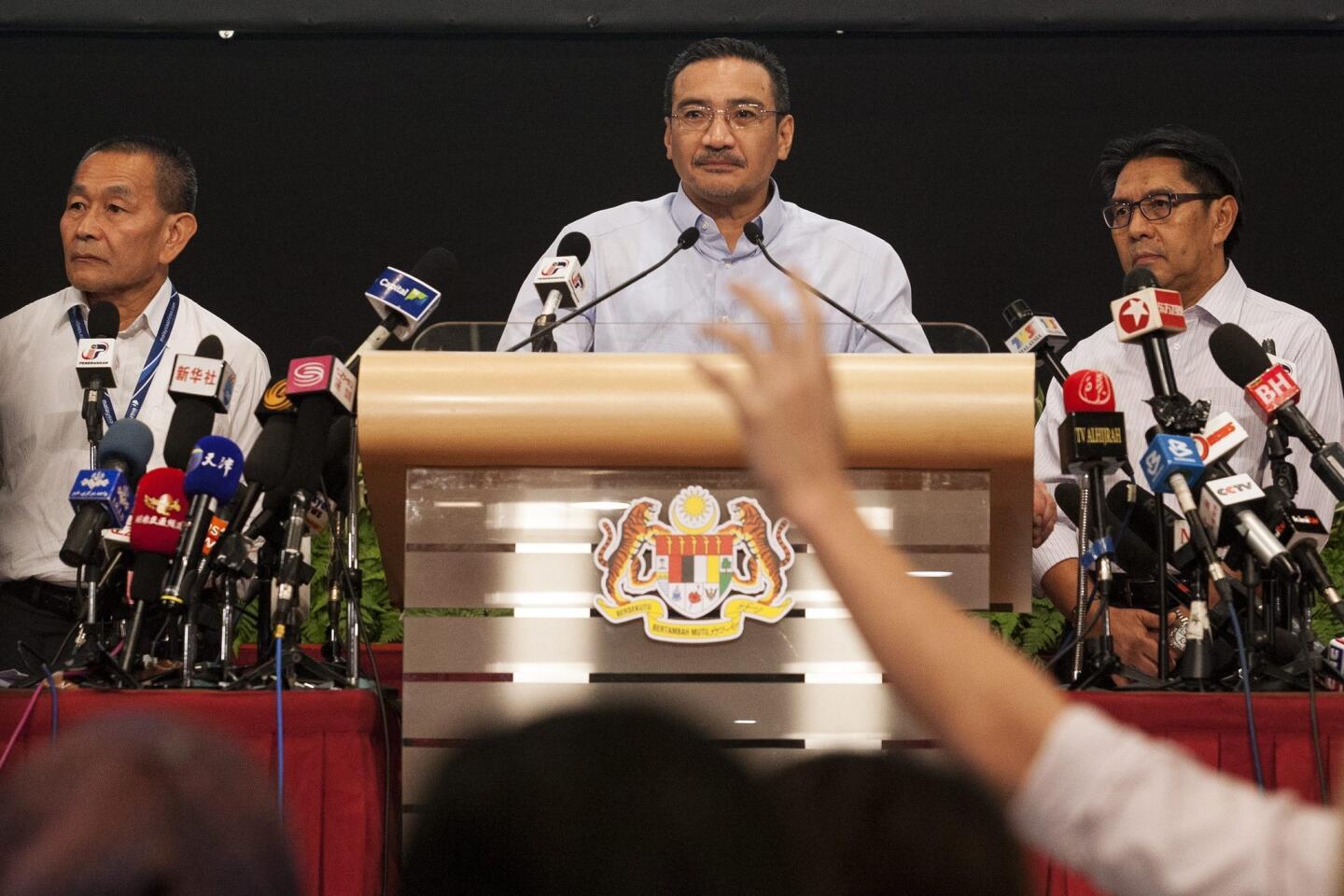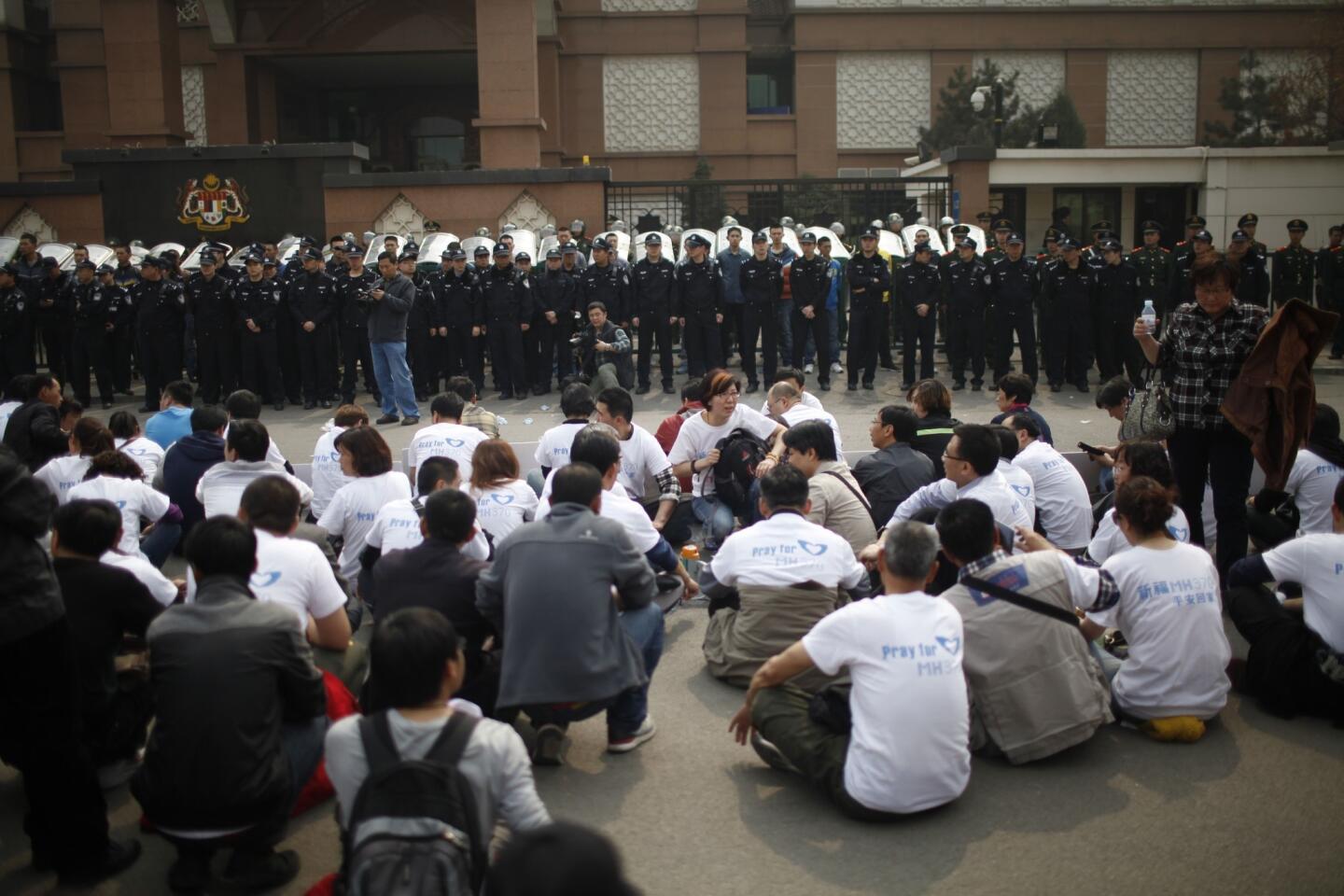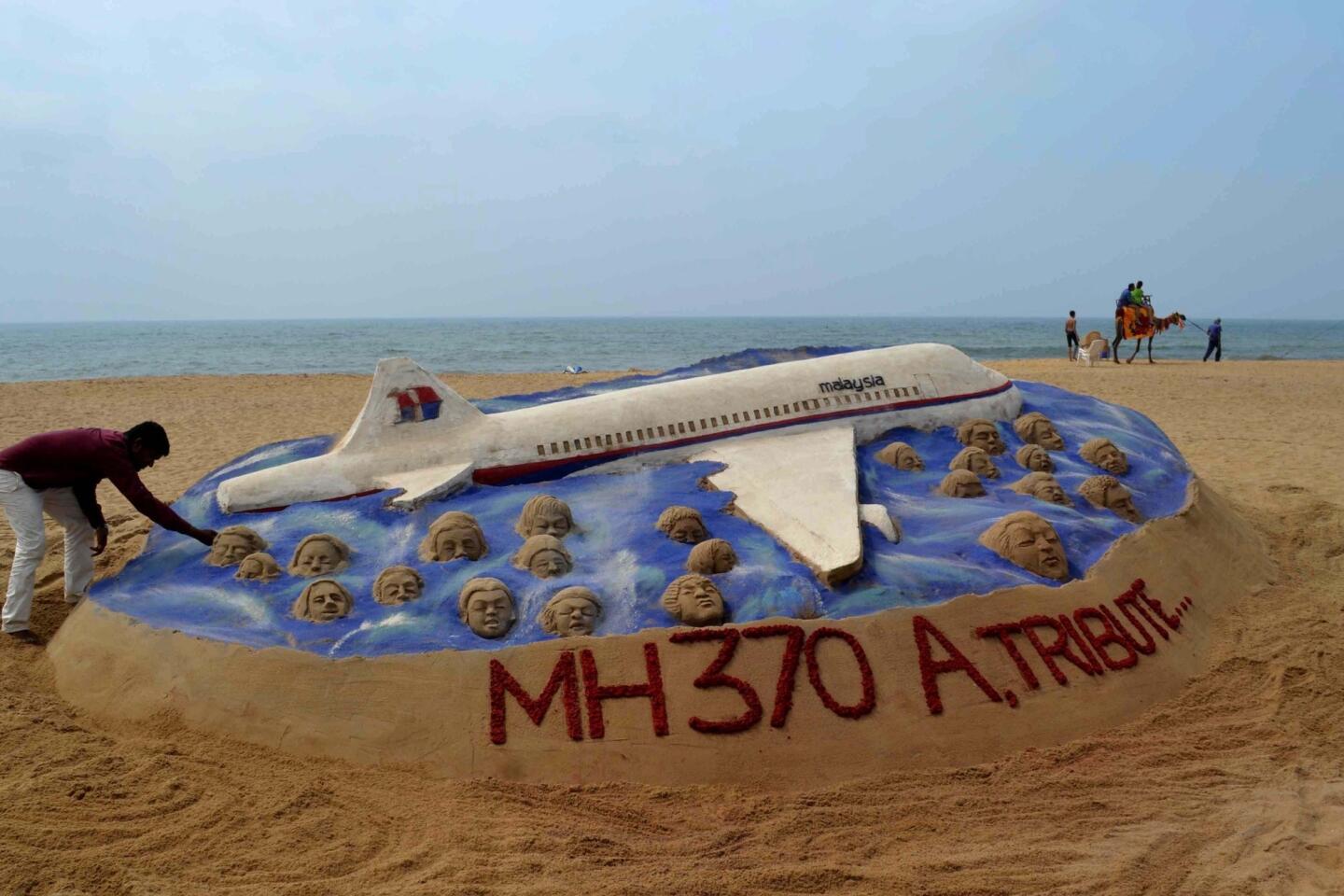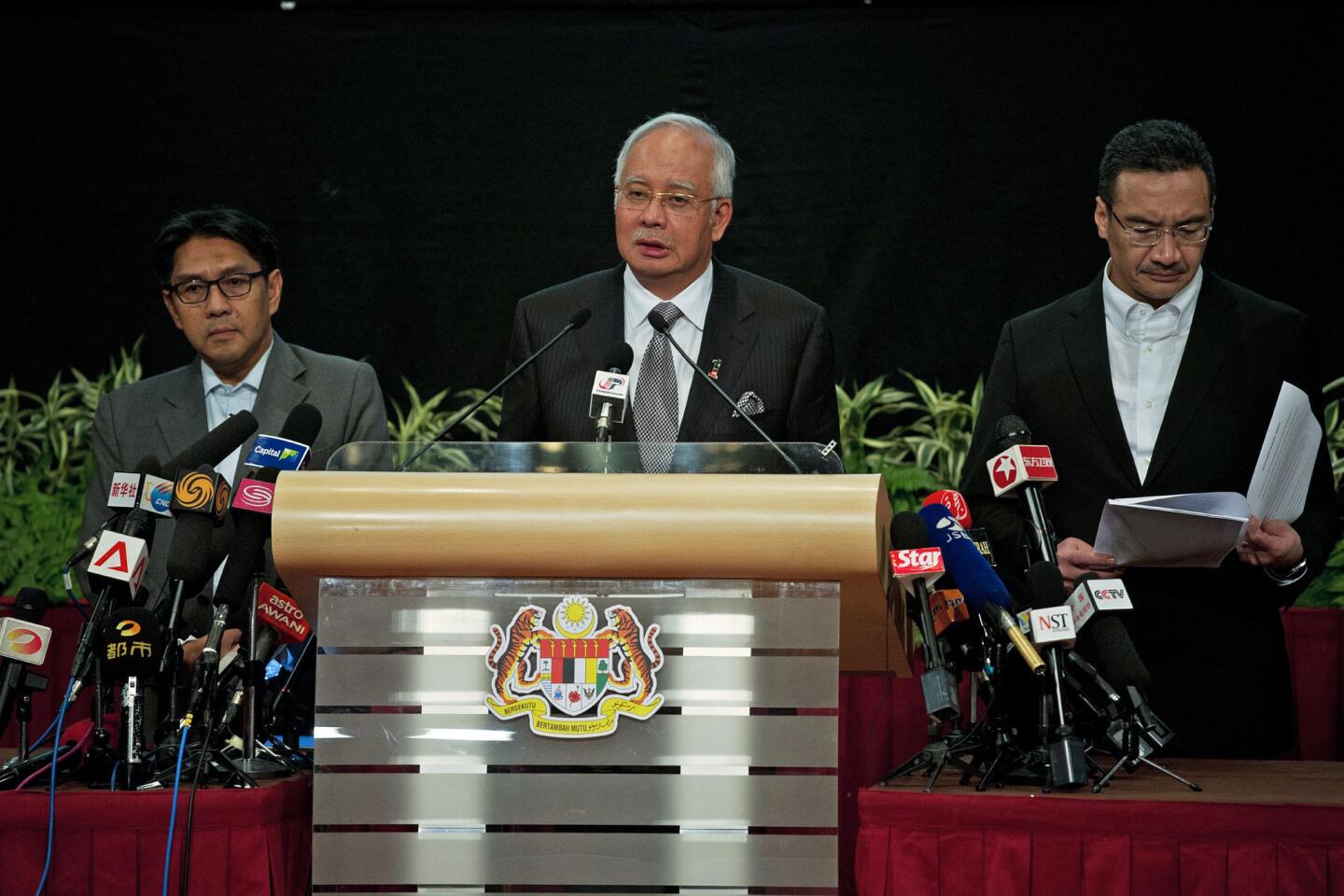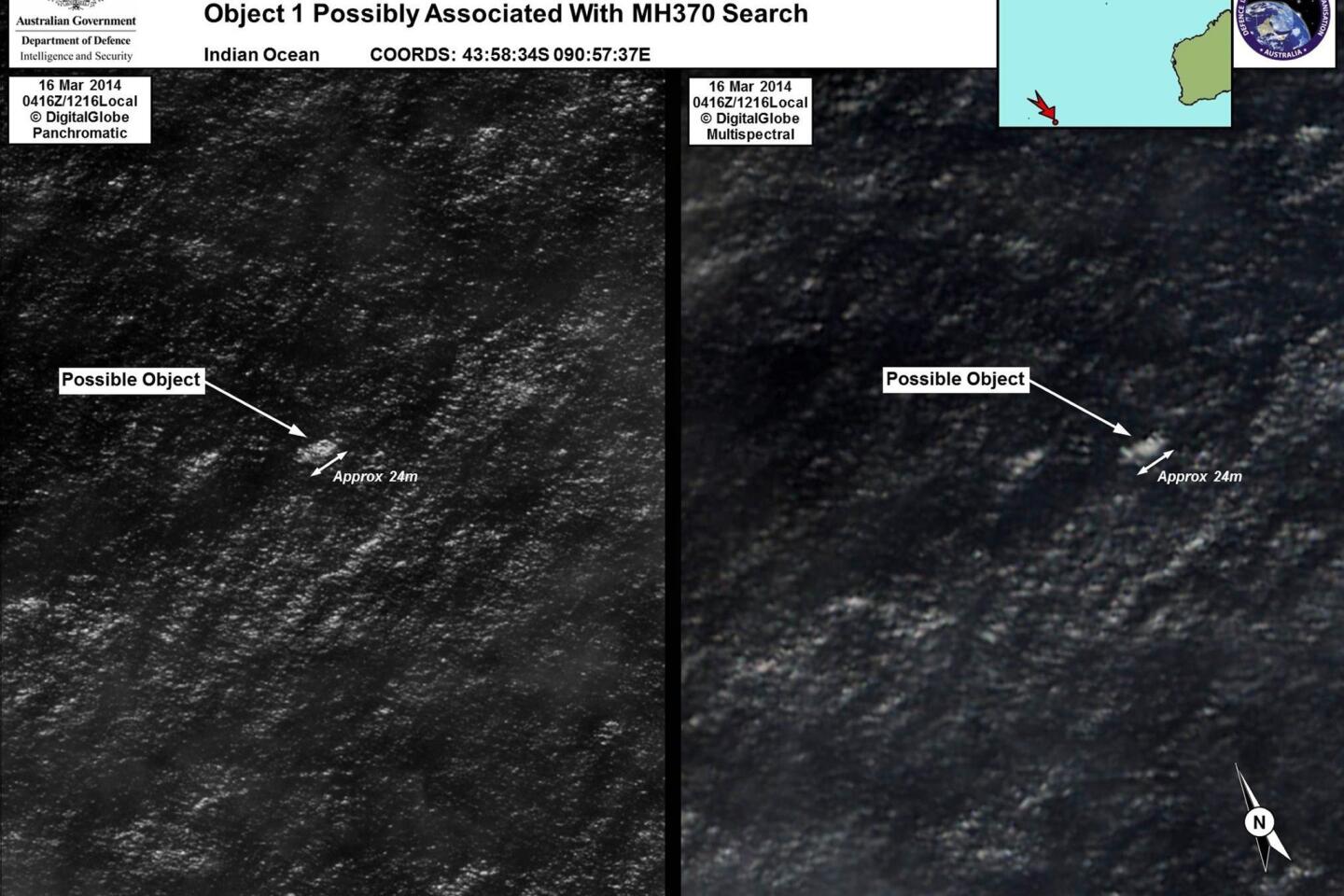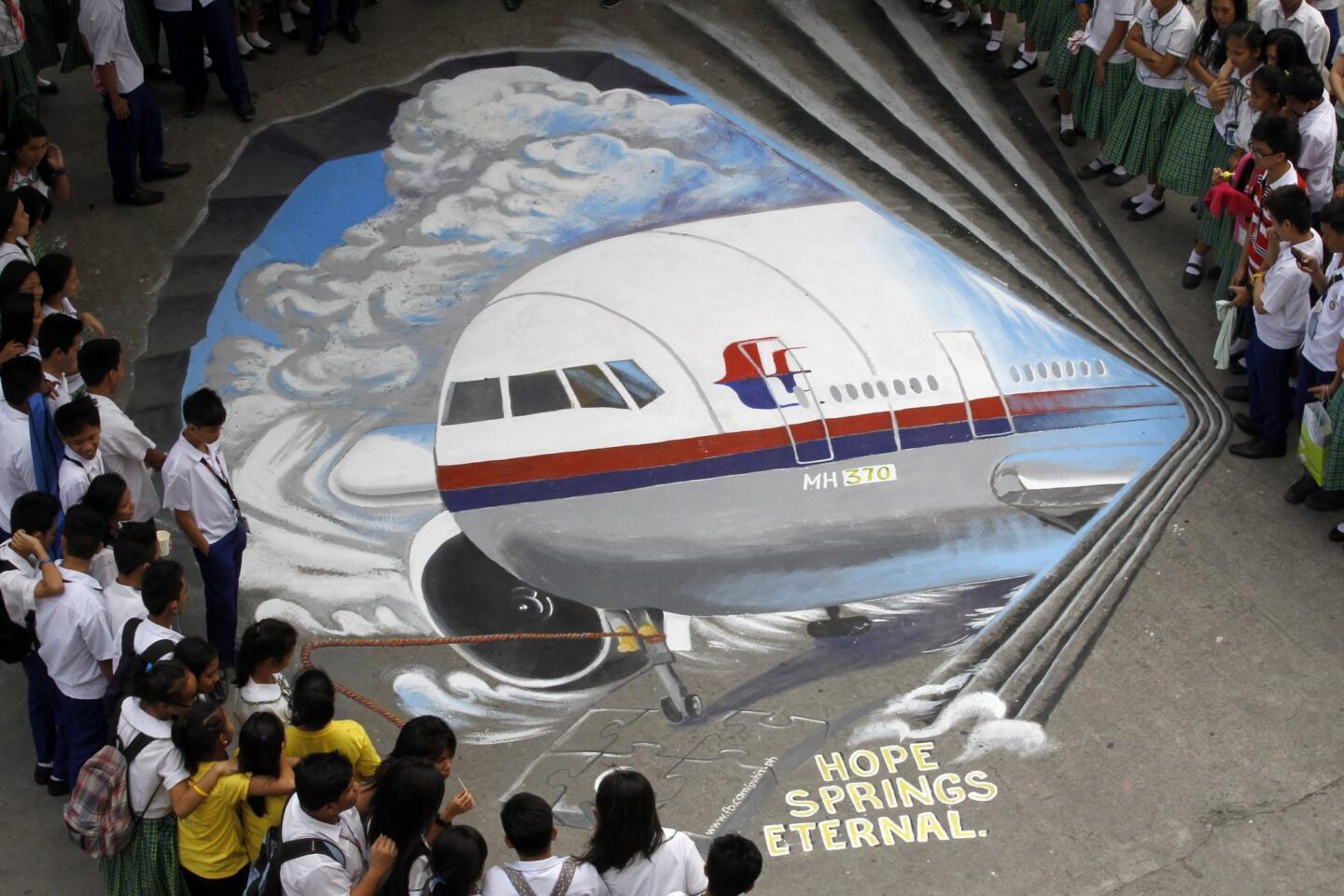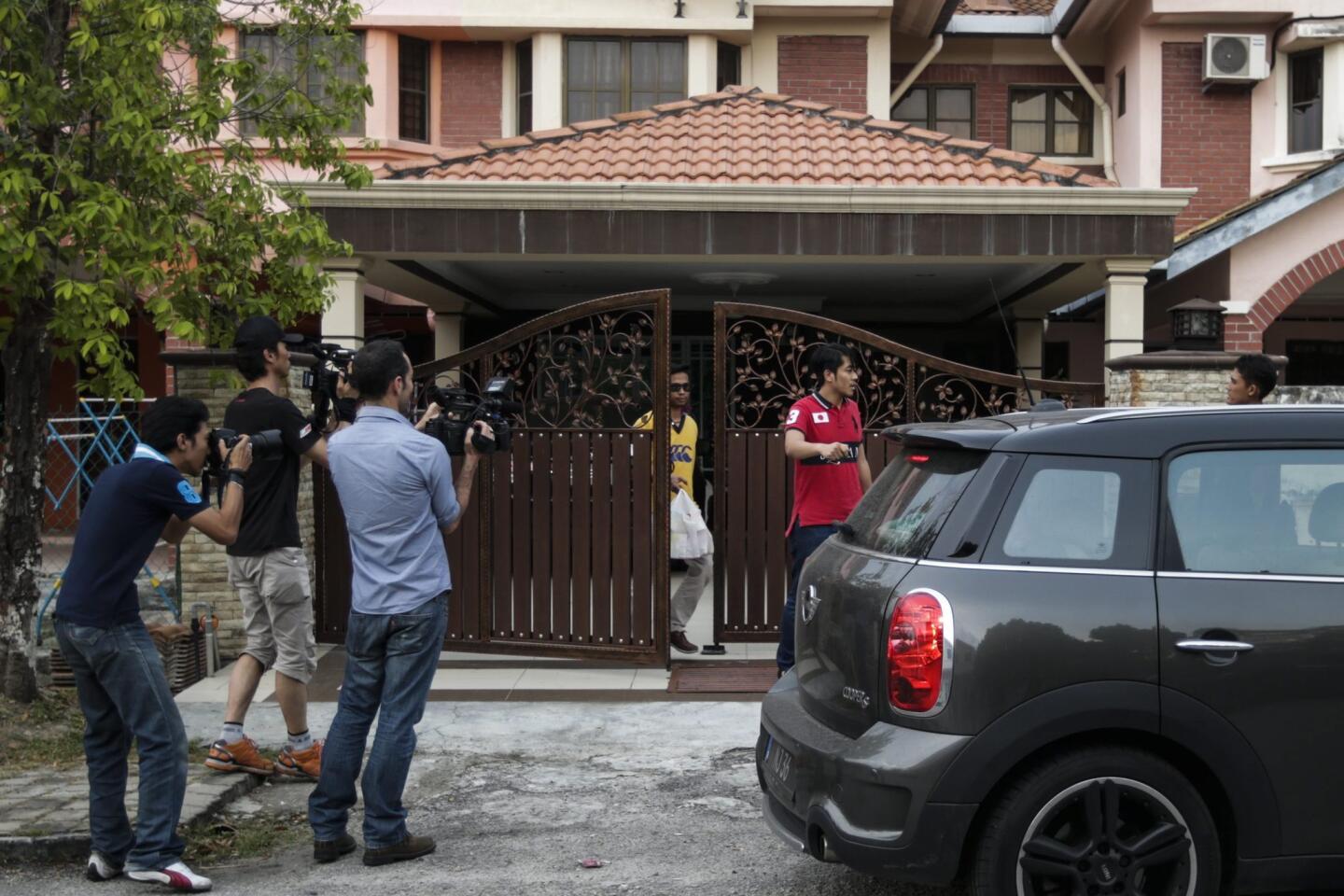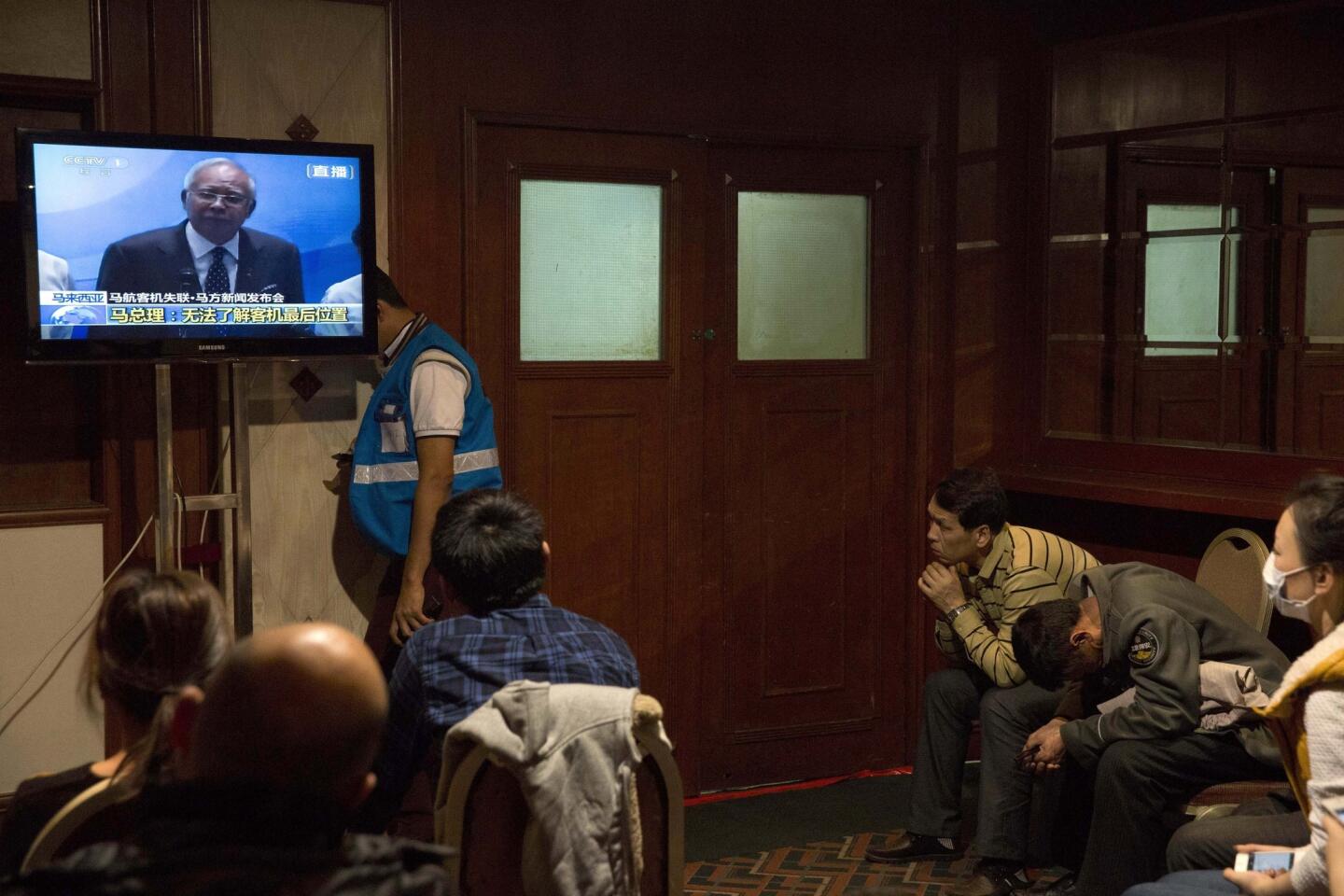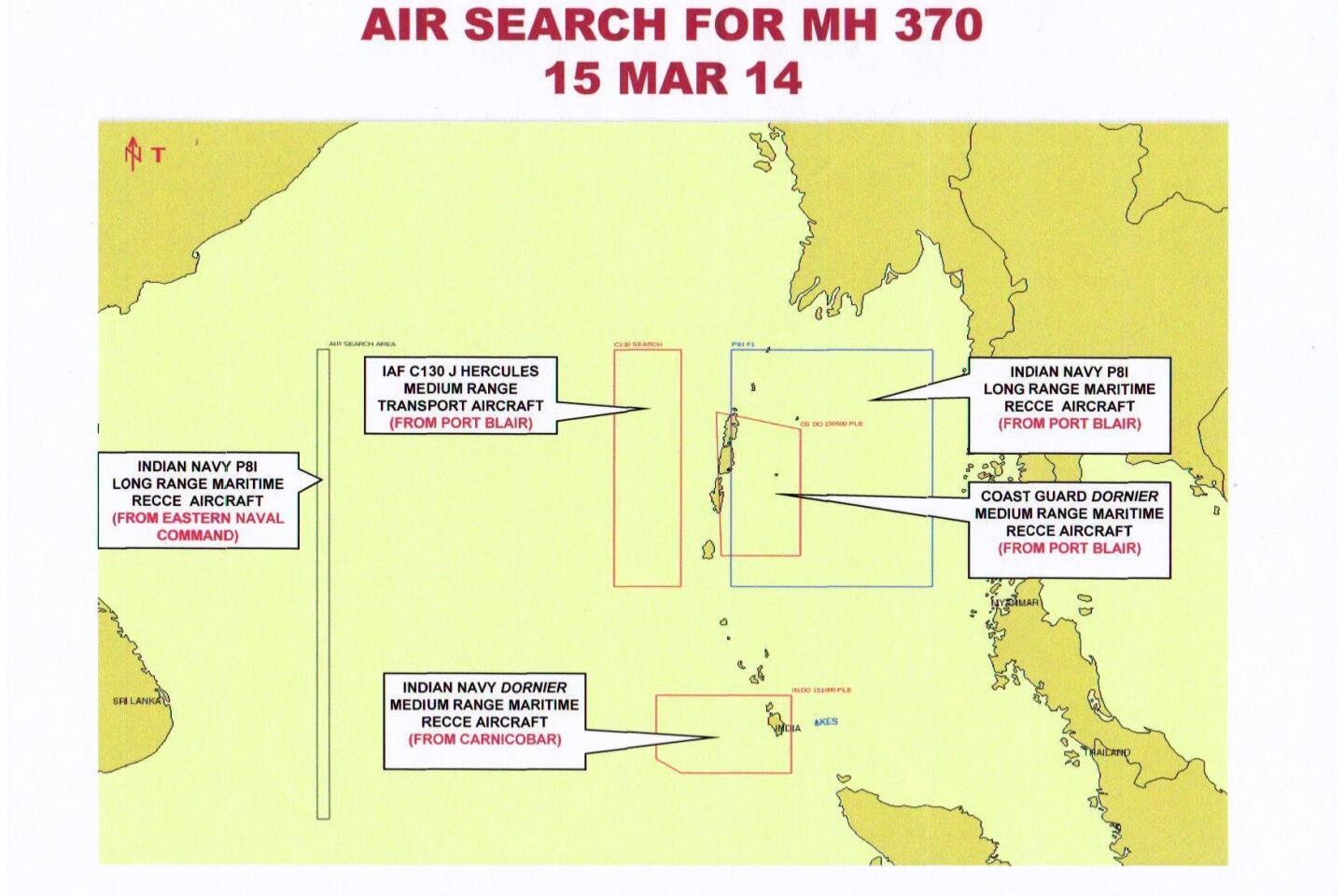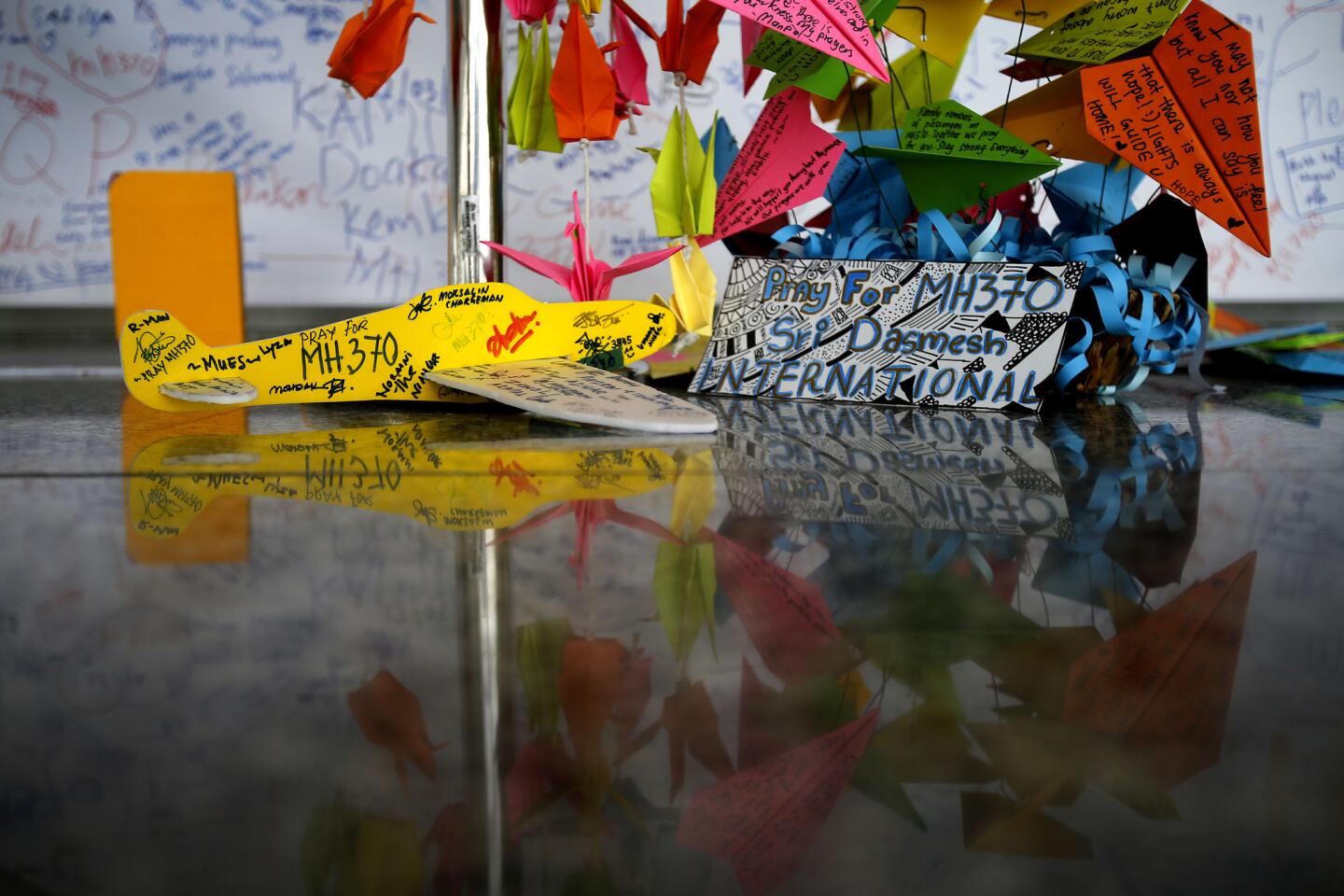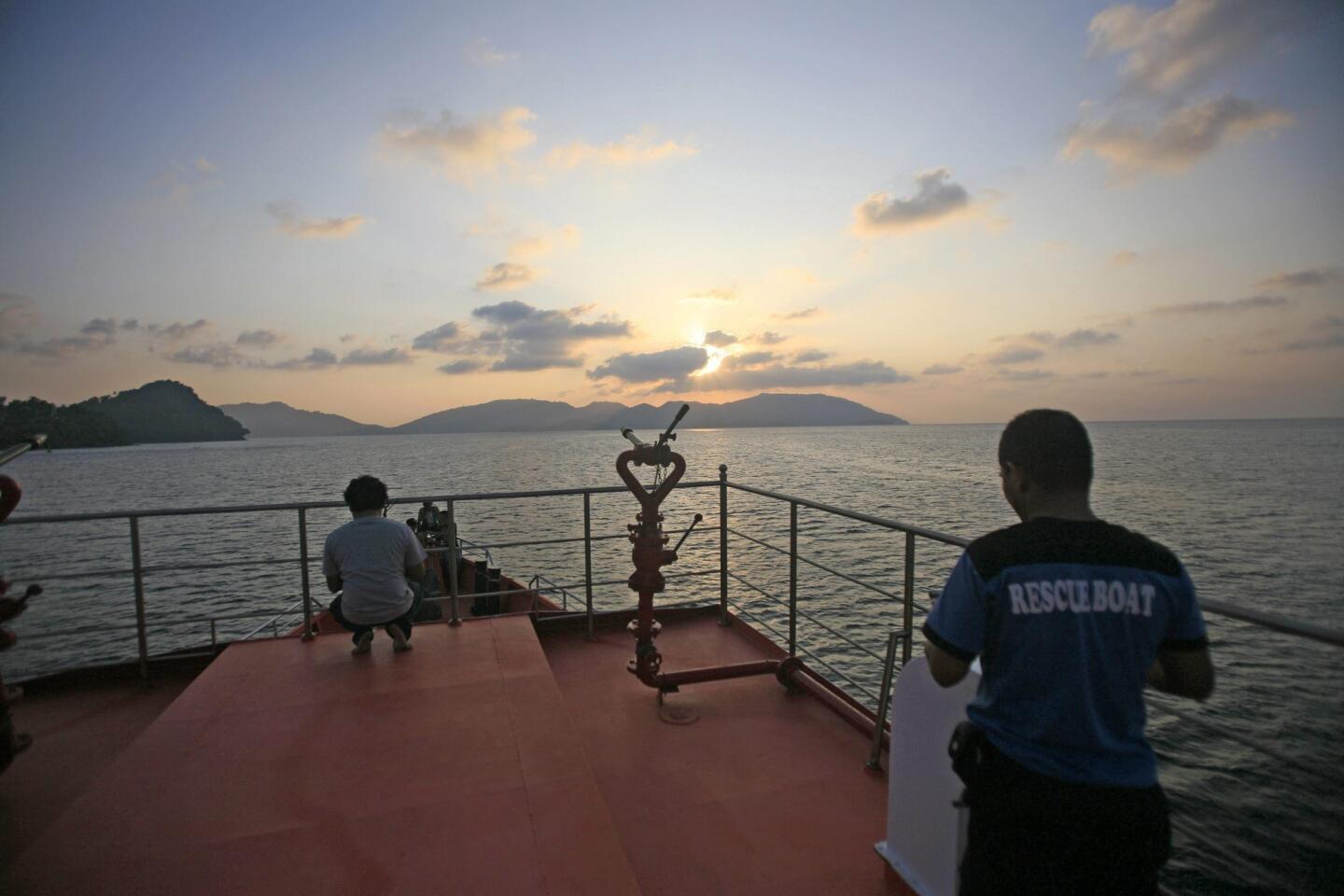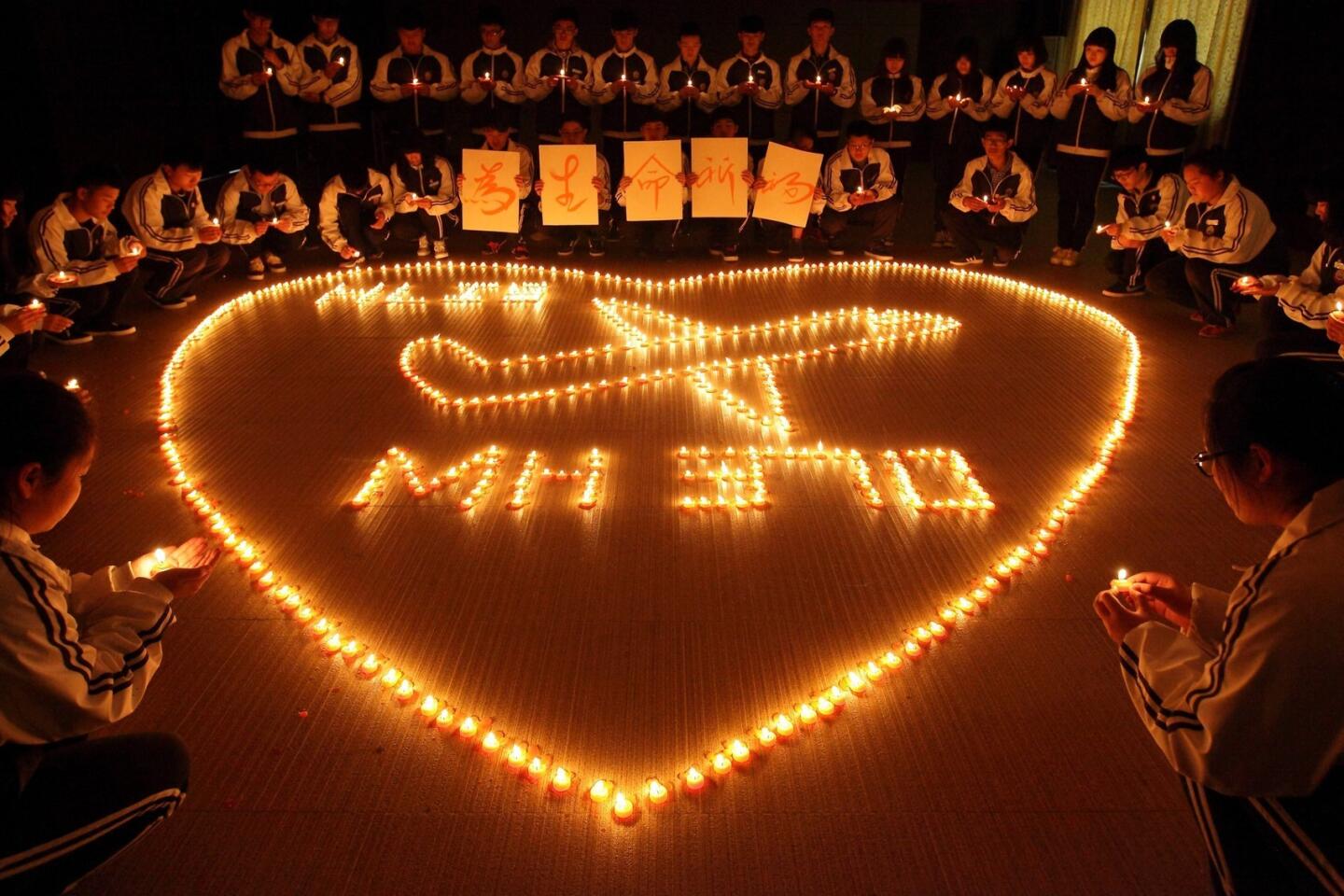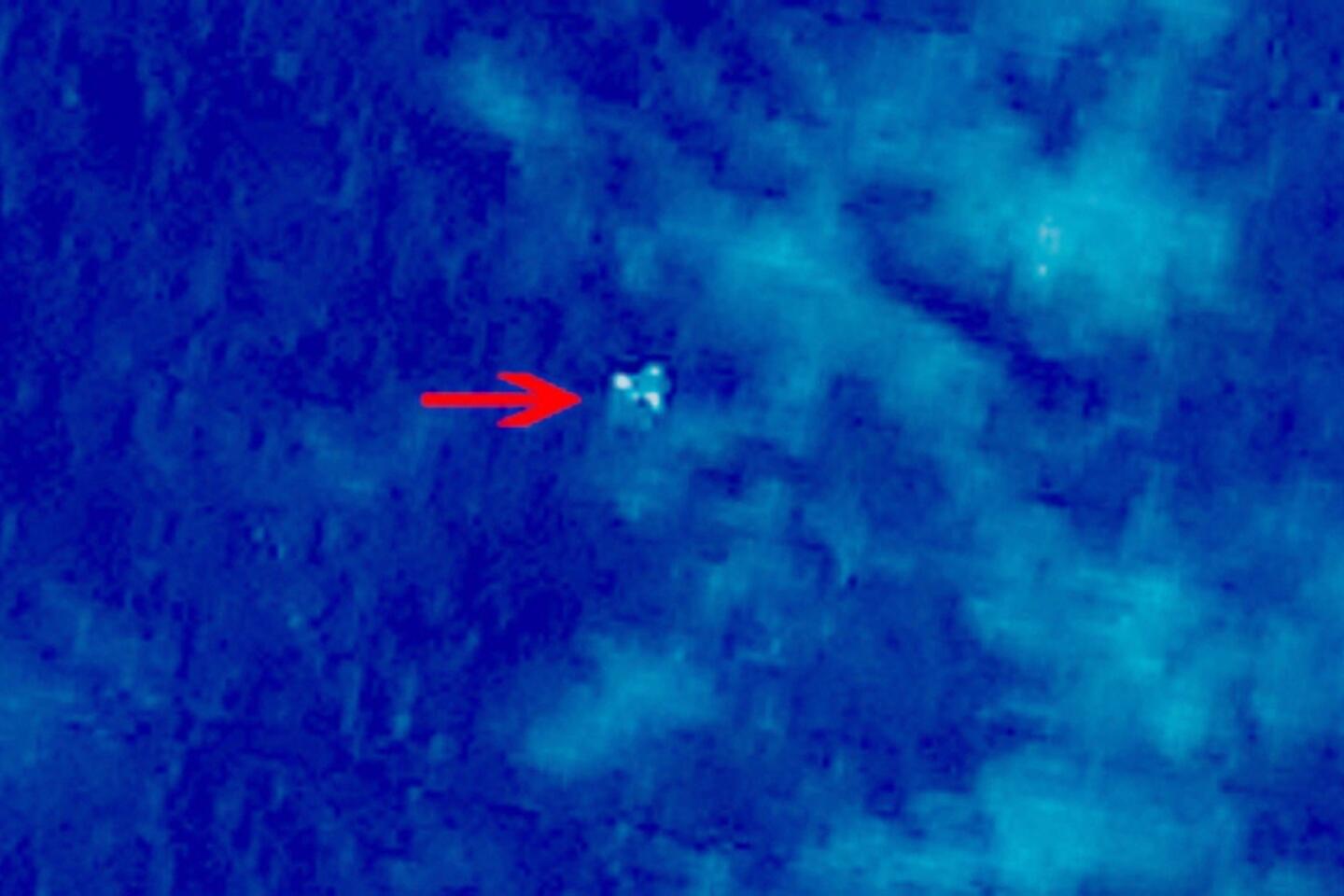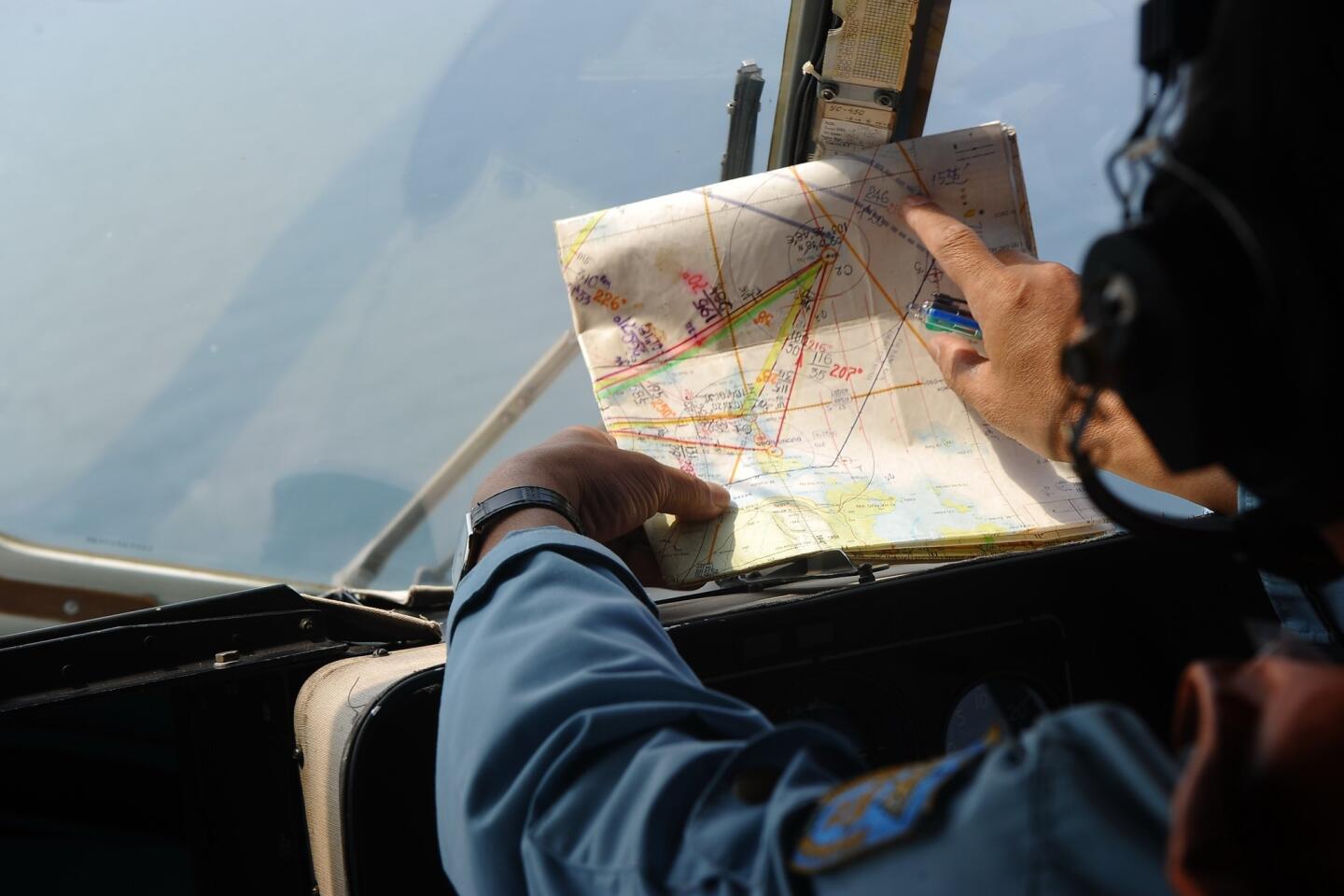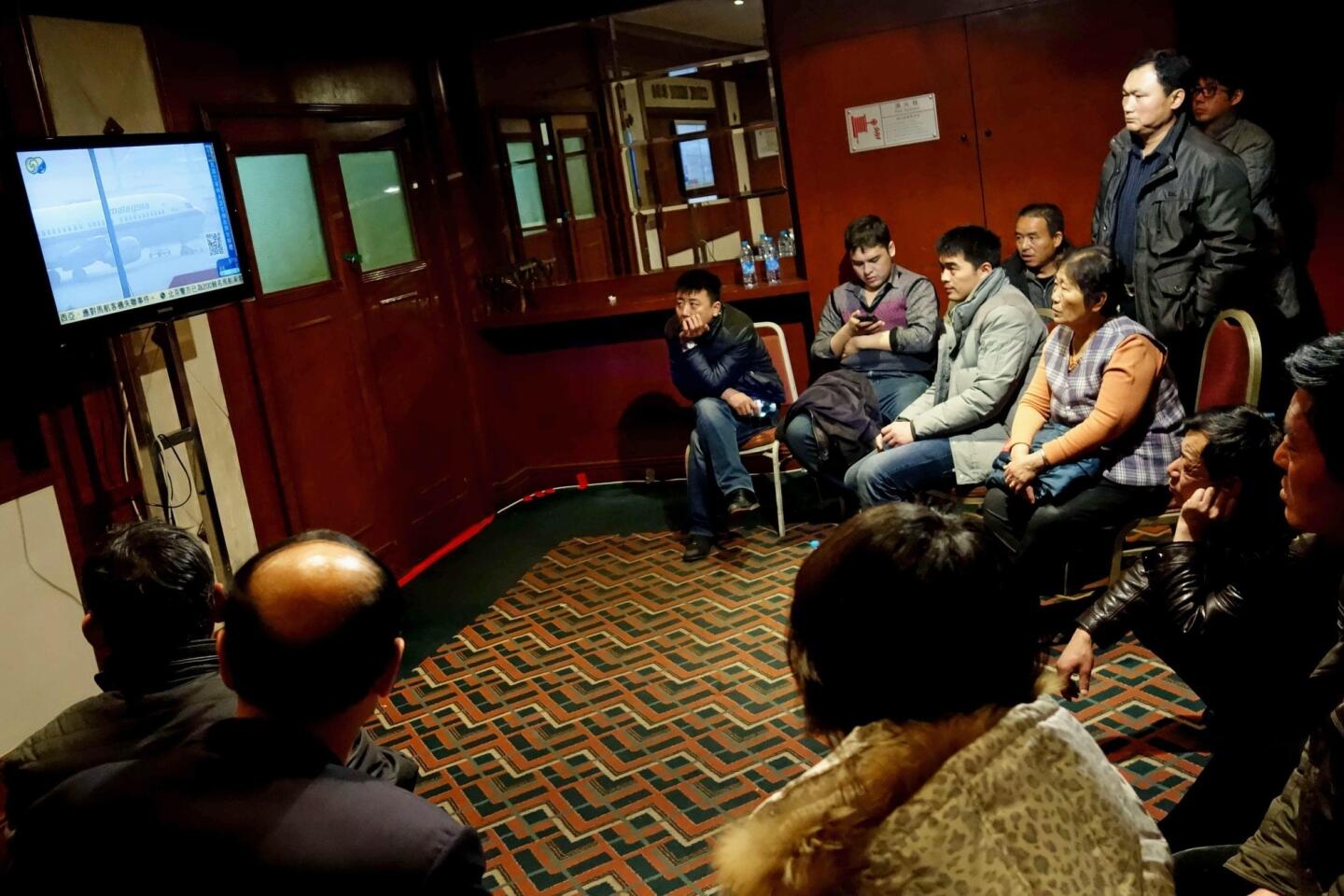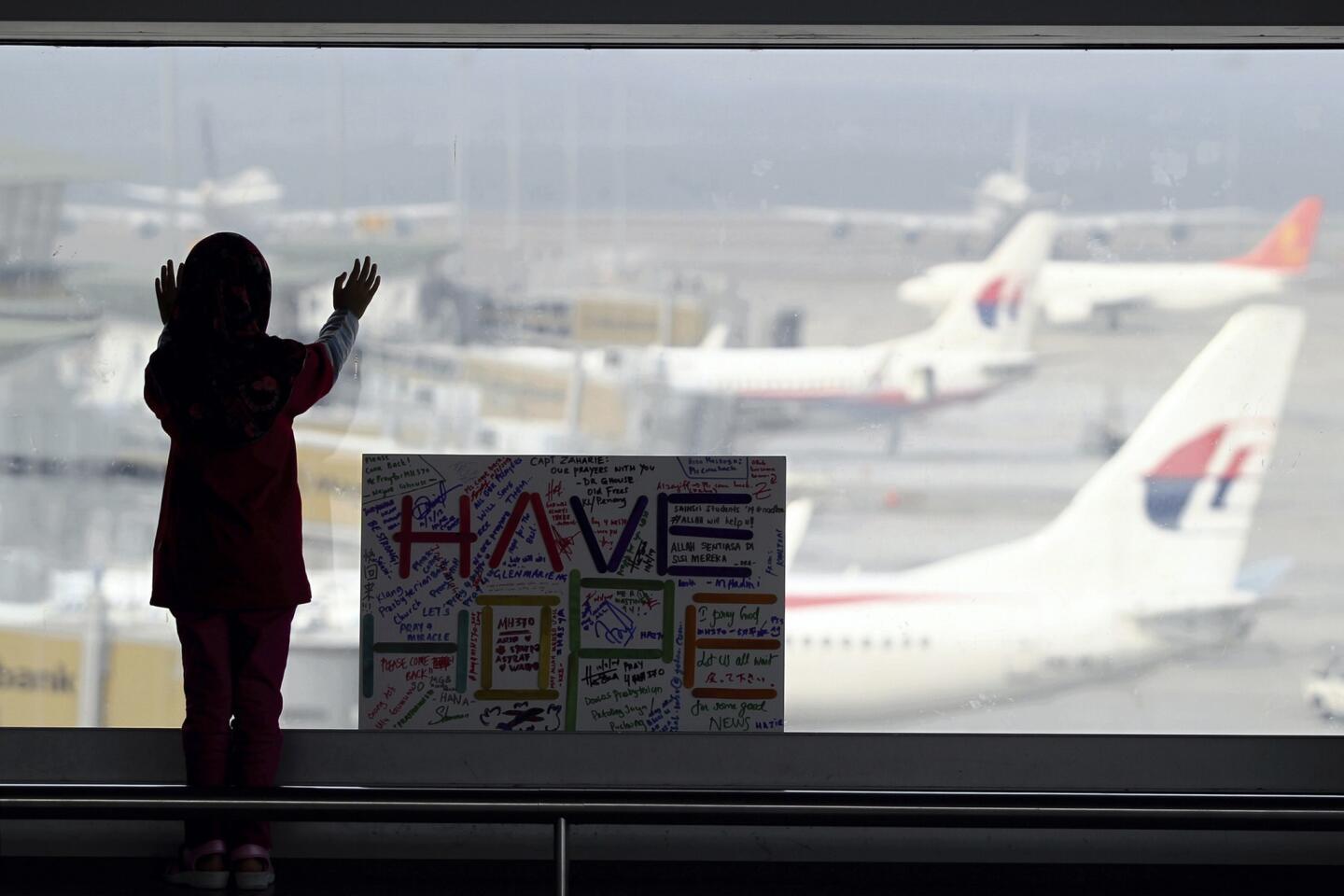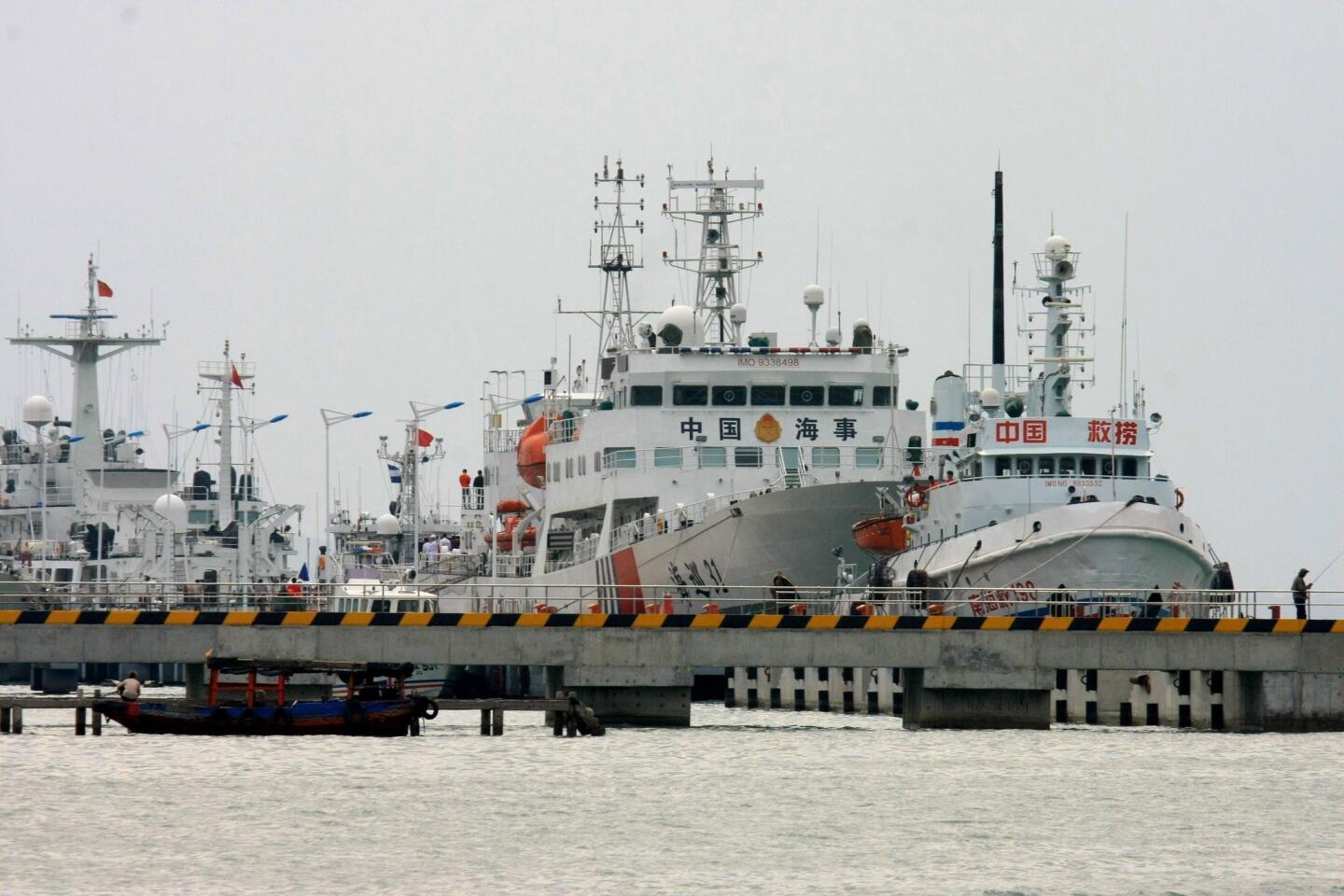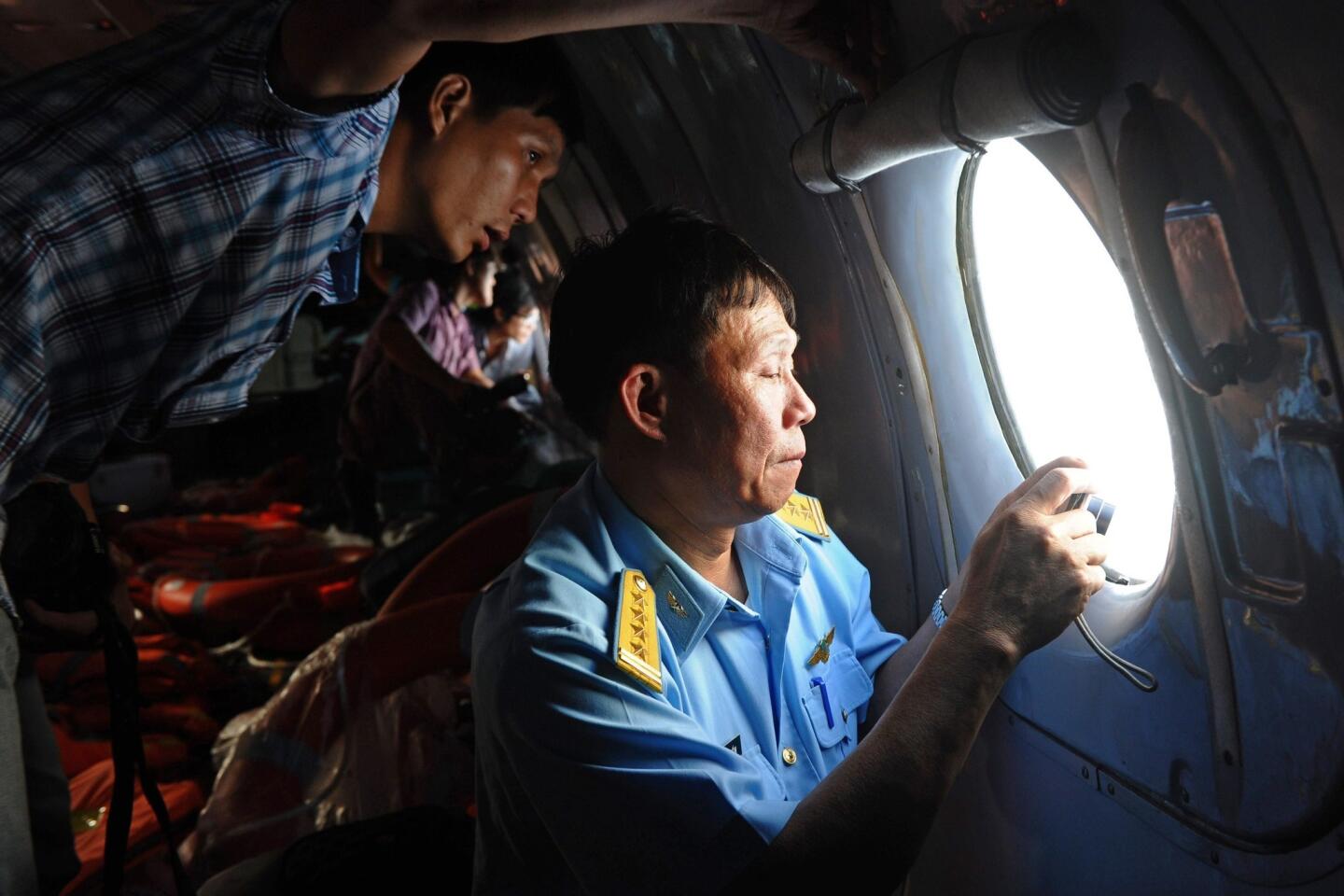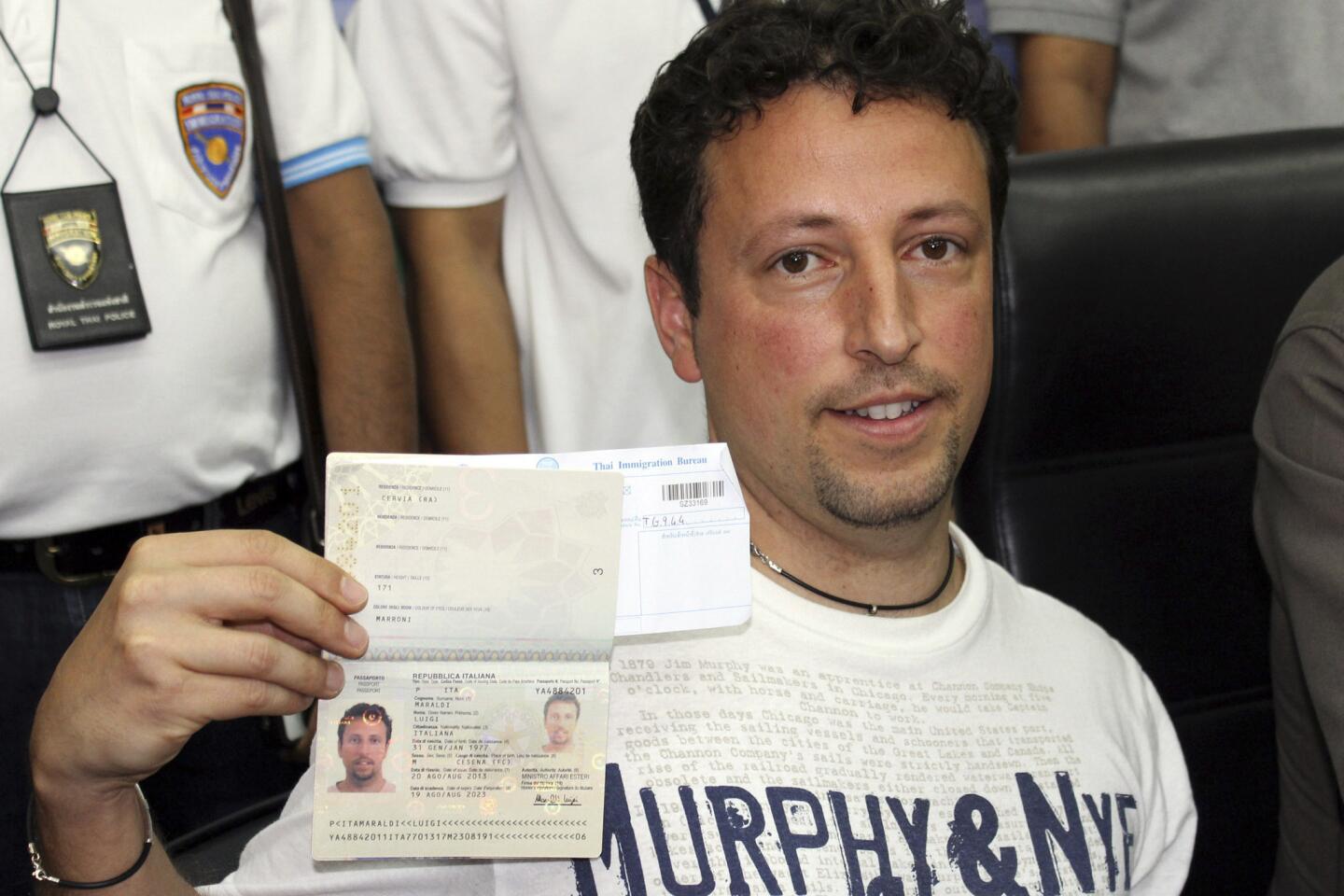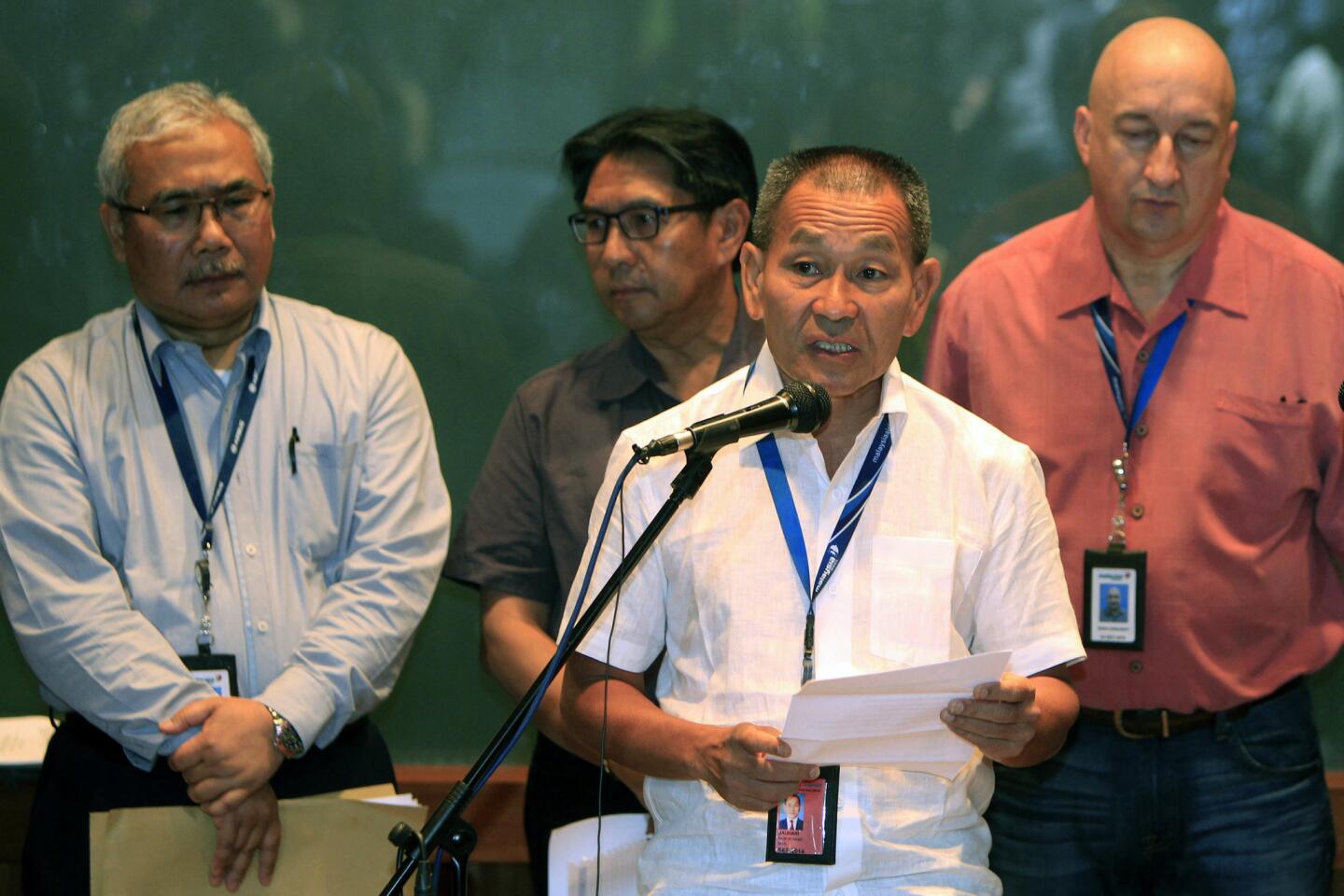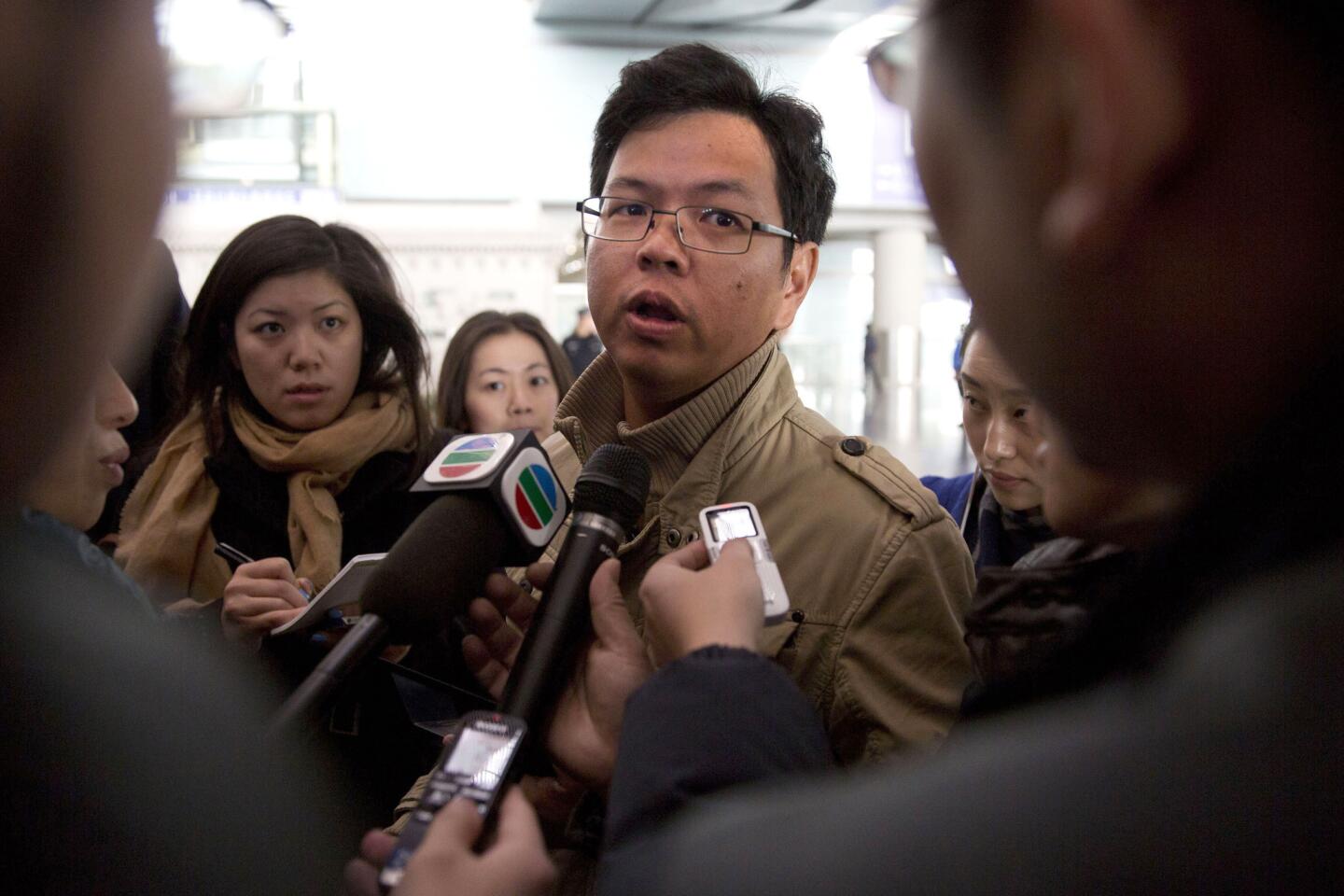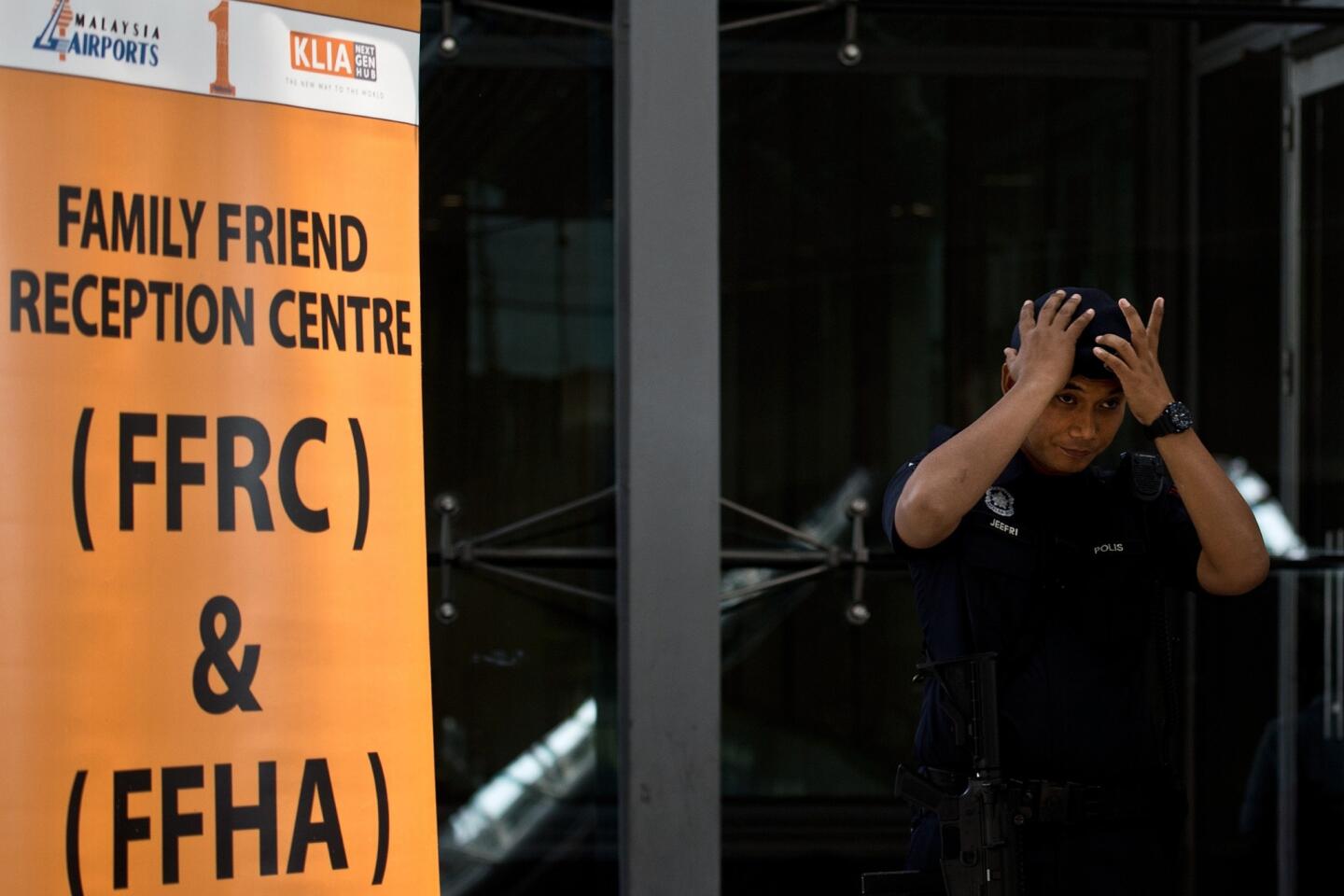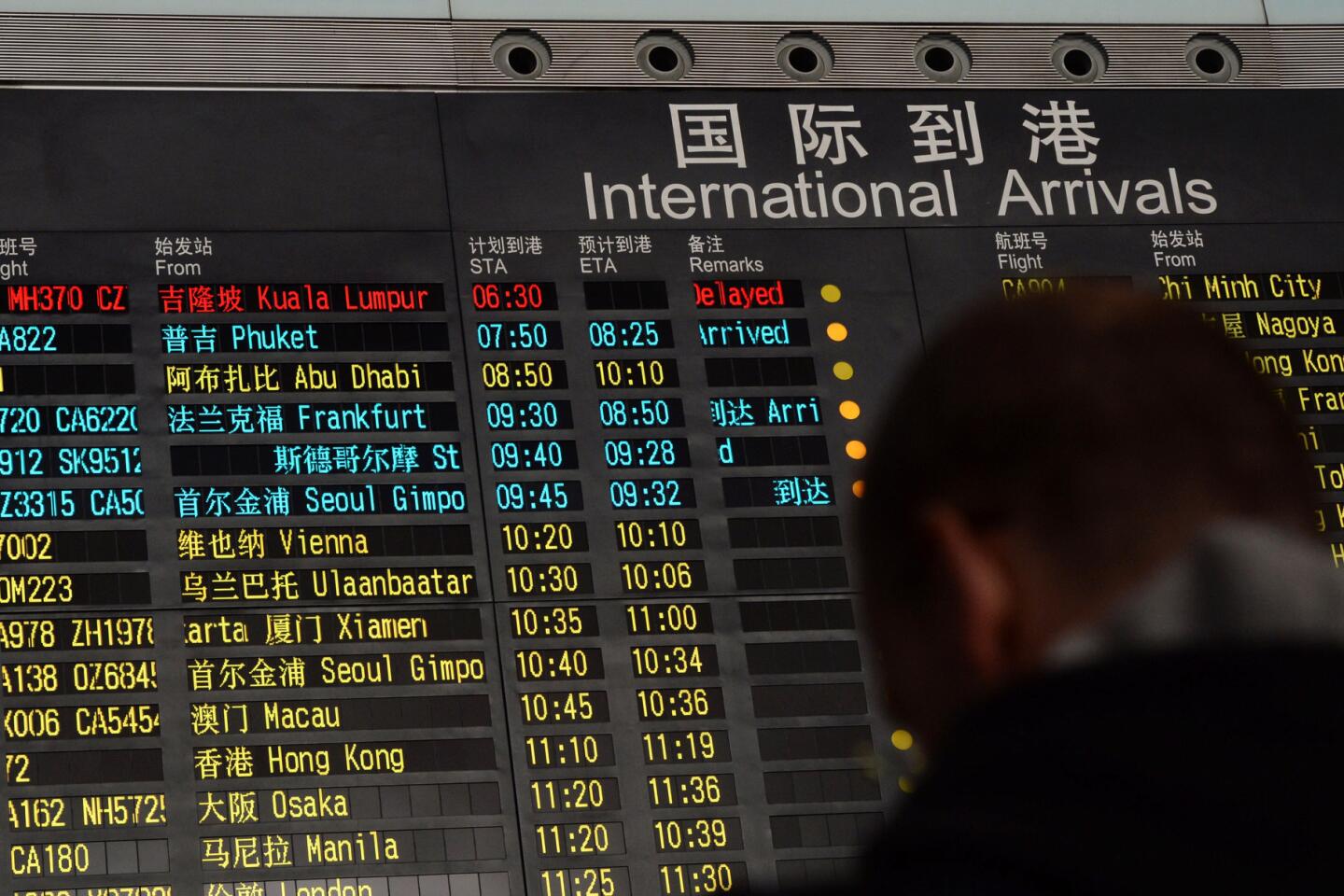Conflicting reports deepen Malaysia jet mystery
BEIJING -- The mystery of missing Malaysia Airlines Flight 370 deepened amid allegations that the airplane flew four hours longer than originally thought and might have traveled more than 1,000 miles away from where search-and-rescue teams are looking.
Citing U.S. national security sources, the Wall Street Journal reported Thursday that government personnel were pursuing the possibility that the plane was commandeered “with the intention of using it later for another purpose.’’ The newspaper also said that data transmitted by an onboard monitoring system to Rolls-Royce Plc., the engine manufacturer, suggested that the plane flew for up to five hours in total after its takeoff from Kuala Lumpur at 12:21 a.m. Saturday morning.
Malaysian officials at a press conference Thursday denied the story and said the last engine data were transmitted at 1:07 a.m., about 20 minutes before the aircraft disappeared from civilian radar screens.
Nevertheless, the Malaysians said they had expanded the search-and-rescue operation into India and surrounding waters, the Bay of Bengal, Andaman Sea and Arabian Sea. If in fact the Boeing 777 flew for five hours from Kuala Lumpur, it could have traveled 2,200 nautical miles, as far as the India-Pakistan border.
The latest twist only added to the frustration in a 12-nation search-and-rescue operation that now involves more than 80 ships, aircraft and satellites searching through much of Southeast Asia.
“The plane vanished in thin air,’’ said Malaysia’s acting transportation minister, Hishamuddin Hussein, at the press conference late Thursday in Kuala Lumpur. “We have looked at every lead and in most cases, I believe all the case we pursued, we have not found anything positive.’’
Malaysian rescue planes early Thursday rushed to a location over the Gulf of Thailand, roughly halfway between Kuala Lumpur and Ho Chi Minh City, where a Chinese satellite detected three large floating objects. However, no sign of the plane or the debris was discovered in the search and Hishamuddin said that the release of the satellite photos by a Chinese defense agency had been “a mistake.”
The flight carried 239 passengers and crew and was headed to Beijing.
With the majority of the passengers Chinese nationals, the Chinese government is expressing increasing frustration at the lack of progress in the search, now in its sixth day.
“All the countries involved must demand that the Malaysians disclose all the information they have. The information they’ve released so far is implausible. It has caused a lot of confusion and has led to people looking in the wrong place,’’ complained Hu Hongjun, a professor of civil aviation at the University of Tianjin.
Until now, the search effort has focused on the Gulf of Thailand, the original flight path of the missing plane. But the Malaysians have conceded the plane might have made a turn because their military radar detected an unidentified aircraft over the Strait of Malacca, off the west coast of the Malay Peninsula, about 330 miles off course. Malaysian military officials said it is unclear whether the unidentified craft was the missing Flight 370.
Among the various hypotheses under investigation are that the pilots attempted to turn back to Kuala Lumpur or find another airport; that they passed out from lack of oxygen after a technical malfunction or sabotage while the airplane kept heading west; or that there was a hijacking attempt by a passenger or one of the crew.
Satellite imagery taken of the area that night detected no flash of light that would indicate a midair explosion.
Rolls-Royce declined to release details about the investigation, except to confirm that its engines do automatically transmit data to a monitoring center in the British city of Derby. The information is transmitted at roughly 30-minute intervals.
“The last transmission of engine data was at 1:07 a.m. It did not go on longer,’’ said Malaysia Airlines Chief Executive Ahmad Jauhari Yahya, flatly denying the Wall Street Journal report.
Industry executives say that incident shows the urgent need for better systems to keep track of aircraft.
“We can track our cars and our kids’ cellphones, but there is no way of tracking planes as they fly around the world,’’ said Don Tomas, president and chief executive of Aeron, which is developing a satellite-based surveillance system.
Twitter: @barbarademick
More to Read
Sign up for Essential California
The most important California stories and recommendations in your inbox every morning.
You may occasionally receive promotional content from the Los Angeles Times.


